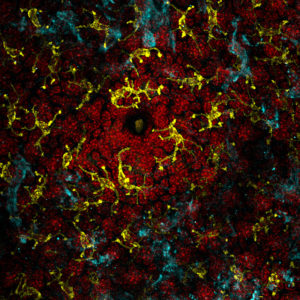
The immune system protects the body by responding to invading organisms, but how is an attack on useful resident microbes prevented? Two NIHR Oxford BRC researchers have identified a pathway that allows immune cells to sense and respond to beneficial bacteria.
The article by the Oxford BRC’s Co-theme Lead for Gastroenterology and Mucosal Immunity Prof Paul Klenerman and Professor of Dermatology Graham Ogg appeared in Nature magazine